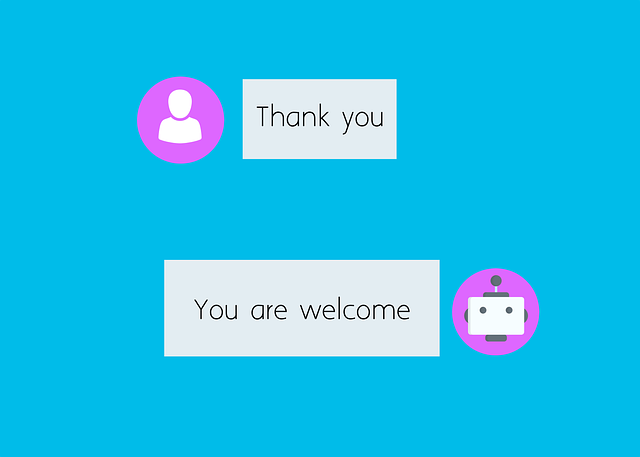Chatbots are transforming Shopify platforms by providing instant customer support, personalized product recommendations, and improved checkout experiences, leading to higher satisfaction, increased sales, and better conversion rates. This guide teaches Shopify store owners how to implement chatbots effectively. It covers understanding your customers, choosing the right platform (e.g., Dialogflow, ManyChat), designing conversational flows, integrating with Shopify, leveraging AI for quick responses, aligning flows with common inquiries, facilitating human intervention when needed, using analytics for insights, and regularly updating chatbot scripts to optimize engagement and drive sales.
“Unleash the power of chatbots to transform your Shopify store’s customer engagement! This comprehensive guide explores the potential of these AI assistants, offering a step-by-step implementation process tailored for Shopify owners. From understanding chatbot fundamentals to uncovering benefits like 24/7 support and personalized interactions, we’ll show you how to enhance customer experiences. Learn best practices to ensure effective communication, boost sales, and create a seamless shopping journey. Optimize your store with chatbots today!”
- Understanding Chatbots and Their Potential on Shopify
- Implementing a Chatbot: A Step-by-Step Guide for Shopify Store Owners
- Benefits and Best Practices for Using Chatbots to Enhance Customer Engagement on Shopify
Understanding Chatbots and Their Potential on Shopify

Chatbots are transforming the way businesses interact with their customers, and Shopify stores are no exception. These intelligent digital assistants offer a range of potential benefits for online retailers. By implementing chatbots on your Shopify platform, you can enhance customer service by providing instant responses to frequently asked questions, reducing response times and increasing customer satisfaction.
Moreover, chatbots can act as powerful sales tools, offering personalized product recommendations based on customer preferences and browsing history. This level of customization can boost sales and create a more engaging shopping experience. With their ability to process natural language queries, chatbots can understand customer needs and guide them through the checkout process seamlessly, thereby increasing conversion rates for Shopify stores.
Implementing a Chatbot: A Step-by-Step Guide for Shopify Store Owners

Implementing a Chatbot: A Practical Guide for Shopify Store Owners
1. Assess Your Needs: Begin by understanding your customer base and their common inquiries. Identify pain points where a chatbot can provide immediate assistance, such as product recommendations, order tracking, or basic returns and refunds information. This step is crucial in tailoring your chatbot to address specific Shopify store needs.
2. Choose the Right Platform: Select a chatbot platform that seamlessly integrates with Shopify. Look for features like natural language processing, easy setup, and customization options. Popular choices include Dialogflow, ManyChat, and Chatfuel, each offering varying levels of complexity and functionality. Ensure the chosen platform aligns with your technical expertise to facilitate efficient management.
3. Design Conversational Flow: Map out the chatbot’s conversation flow, considering potential customer queries and desired responses. Define clear paths for different scenarios, ensuring a logical and user-friendly experience. This step involves crafting engaging and helpful dialogue while maintaining simplicity.
4. Train and Test: Feed your chatbot with relevant data and train it to recognize and respond accurately. Test extensively using various inputs to identify and rectify any shortcomings. Continuous training and optimization are key to improving the chatbot’s performance over time.
5. Integrate with Shopify: Set up the chatbot within your Shopify store, following the platform’s integration instructions. Ensure smooth synchronization between your product catalog, customer data, and the chatbot’s responses for a seamless shopping experience.
Benefits and Best Practices for Using Chatbots to Enhance Customer Engagement on Shopify

Implementing chatbots on Shopify is a strategic move that can dramatically enhance customer engagement. These AI-driven tools offer round-the-clock availability, instantly addressing client queries and providing immediate support. By integrating a chatbot, Shopify merchants can expect improved customer satisfaction as buyers receive quick responses to their questions about products, orders, or shipping – all without burdening human customer service representatives.
Best practices for using chatbots on Shopify include tailoring the bot’s conversational flow to align with common customer inquiries, ensuring smooth transitions between automated responses and human agent intervention when needed, and leveraging chatbot analytics to gain valuable insights into customer behavior and preferences. Regularly updating chatbot scripts based on these insights can further refine engagement strategies, ultimately driving sales and fostering stronger customer relationships.
Chatbots are transforming the way Shopify store owners engage with their customers, offering a range of benefits from 24/7 customer support to personalized product recommendations. By implementing chatbots strategically, businesses can enhance customer satisfaction, boost sales, and create a seamless shopping experience. As this article has highlighted, understanding the potential of chatbots and following best practices can help Shopify store owners harness the power of this technology to drive growth and stay competitive in today’s digital marketplace.
